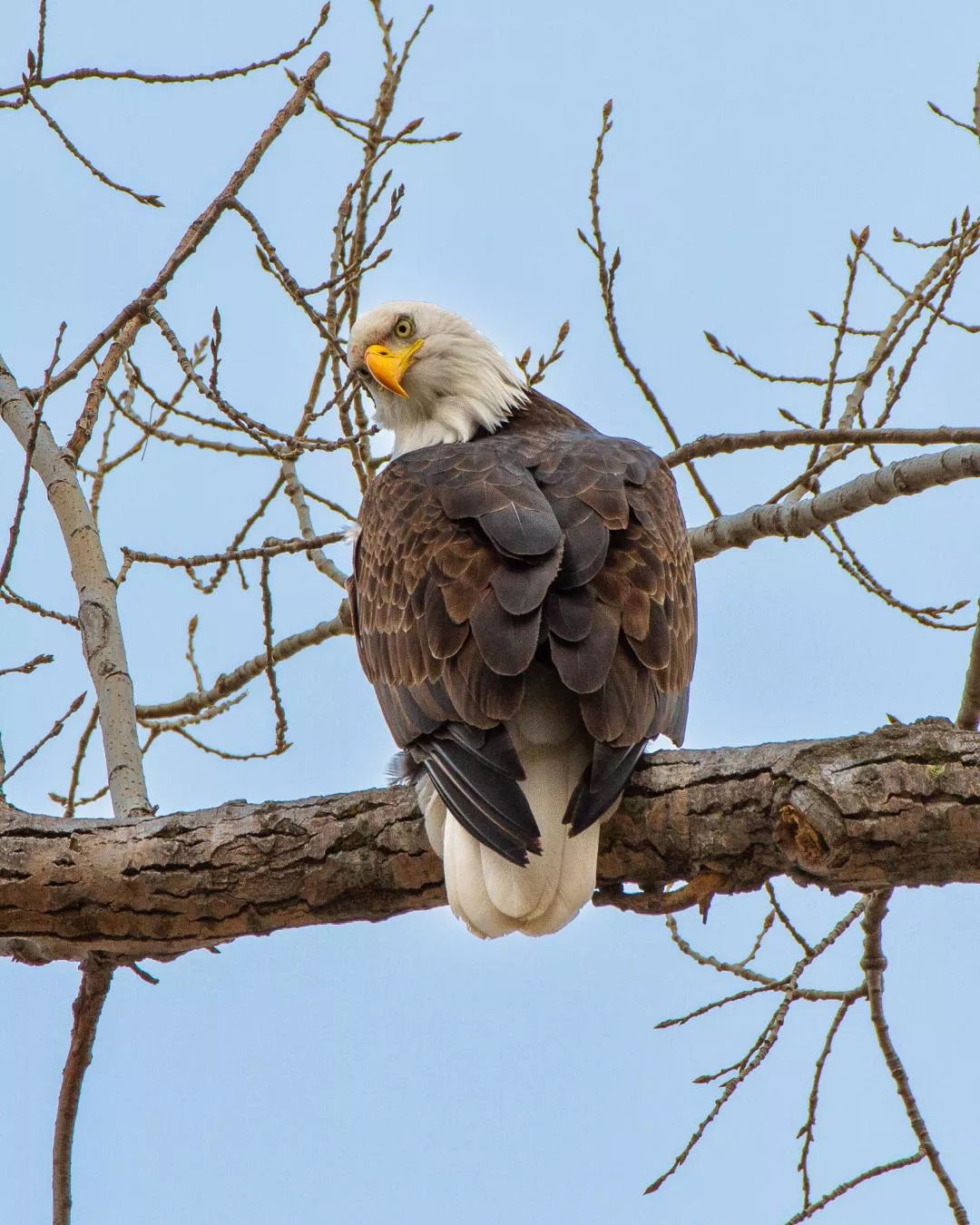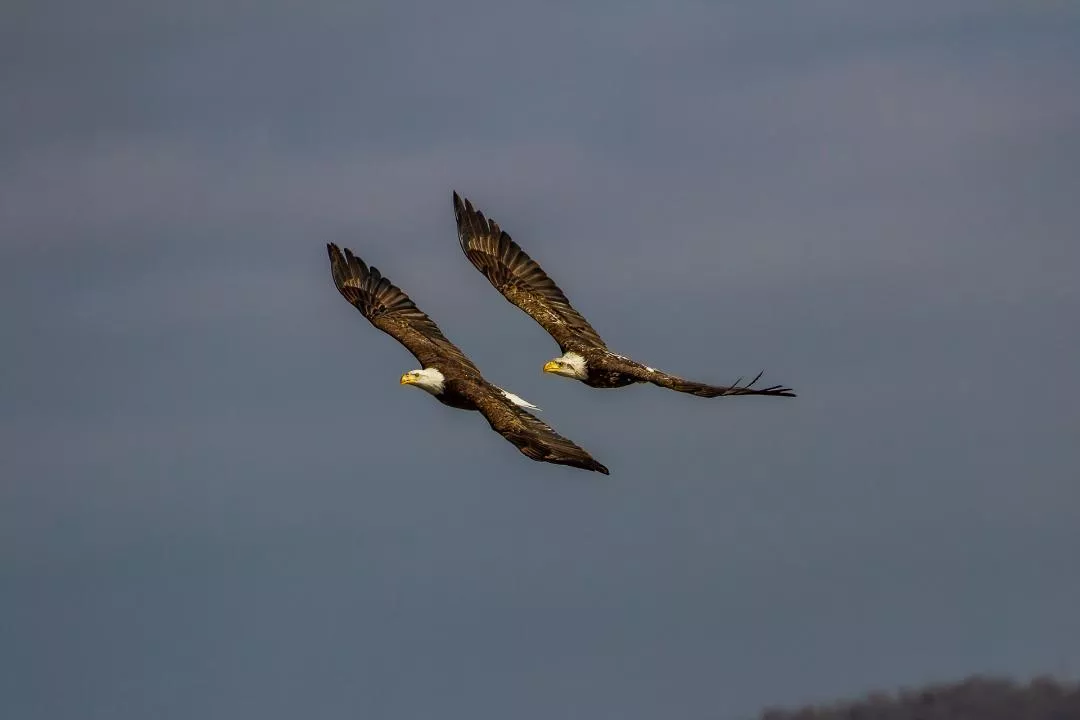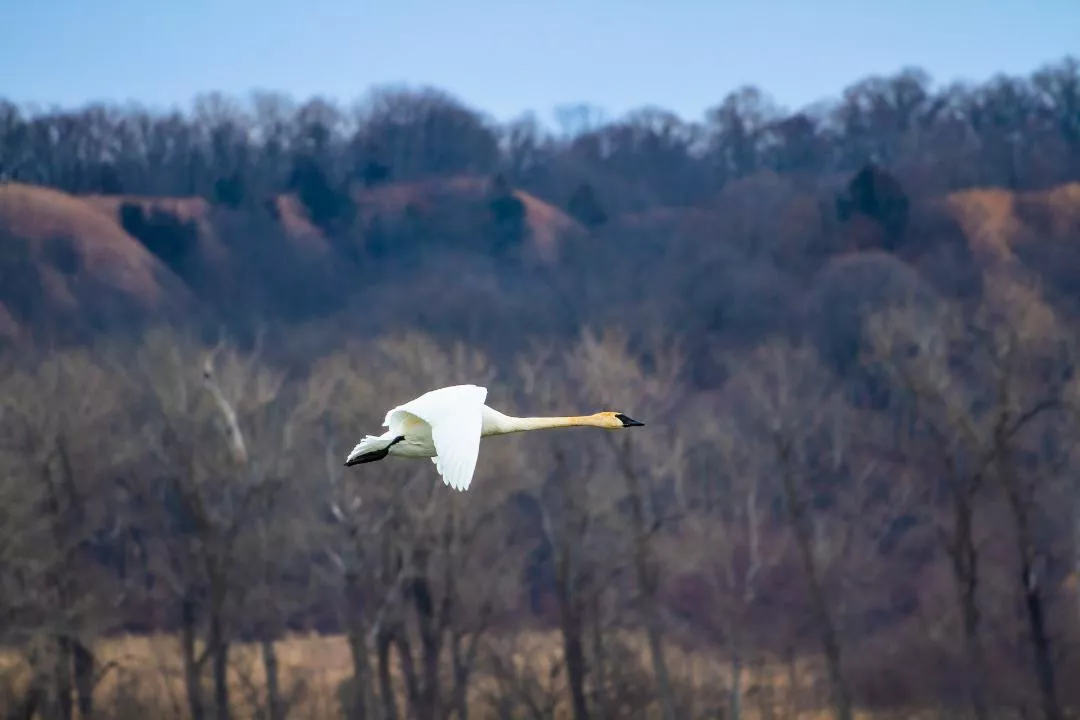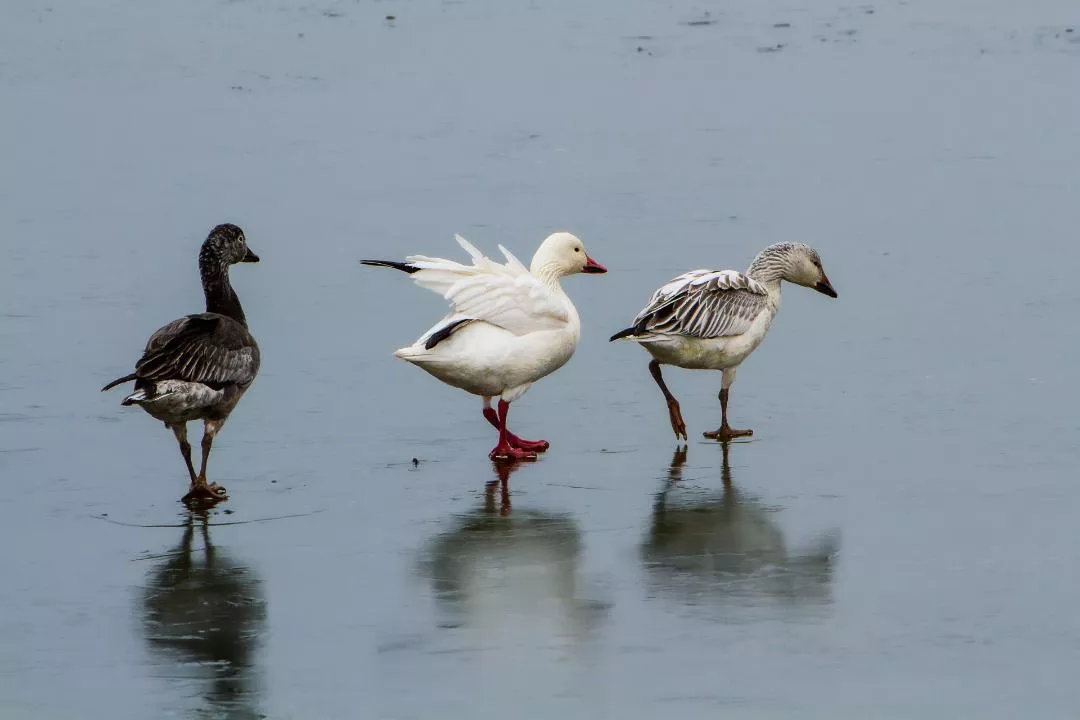
Photo by Alan Bauman, Sierra Club Kansas Chapter
By Alan Bauman, Sierra Club Kansas Chapter Legislative Chair
In November and December of 2021, I made trips to Loess Bluffs to observe and photograph the migrating Bald Eagle population. The number of birds passing through Loess Bluffs has been increasing for years with the recovery of the Bald Eagle. As many as 400 birds have been viewed in the late fall and early winter, and in 2021 that number had increased to more than 700! Eagles were observed in the trees, in flight, and fighting over food. The scene was spectacular! Also present were trumpeter swans and waterfowl.

Photo by Alan Bauman, Sierra Club Kansas Chapter
I am happy to share the photos of my day trip (1 ½ hour north of Kansas City). There is a 10-mile paved road that circles the wetlands, with numerous pull overs for observation. Take warm clothes, as you will want to get out of the car to get closer to the wildlife. I advise taking a lunch as there are no restaurants nearby.

Photo by Alan Bauman, Sierra Club Kansas Chapter
Here are a few facts about Loess Bluffs National Wildlife Refuge in Northwest Missouri. Abundant populations of trumpeter swans, bald eagles, songbirds, shorebirds, waterfowl, deer, coyote, snakes, and hundreds of other species utilize the wetland, forest and grassland habitats on the refuge. As many as 400,000 snow geese and 100,000 ducks migrate through the refuge.
Water levels are drawn down in the spring to expose mudflats so migrating ducks and shorebirds can feed on small clams and invertebrates. In the summer the refuge encourages the growth of moist-soil plants like millet, toothcup and smartweed that ducks like. Arrowhead is a favorite for trumpeter swans. In the fall, the wetlands are reflooded to attract shorebirds and dabbling ducks. Blue-winged teal and green-winged teal are the first to appear, followed by Northern pintails, gadwalls, mallards and snow geese.

Photo by Alan Bauman, Sierra Club Kansas Chapter
Lewis and Clark camped for two nights near the refuge. Clark noted in his journal that the prairies along the Missouri River were beautiful and that "the lands are low and subject to overflow." Enjoy, and take lots of pictures, as I did!